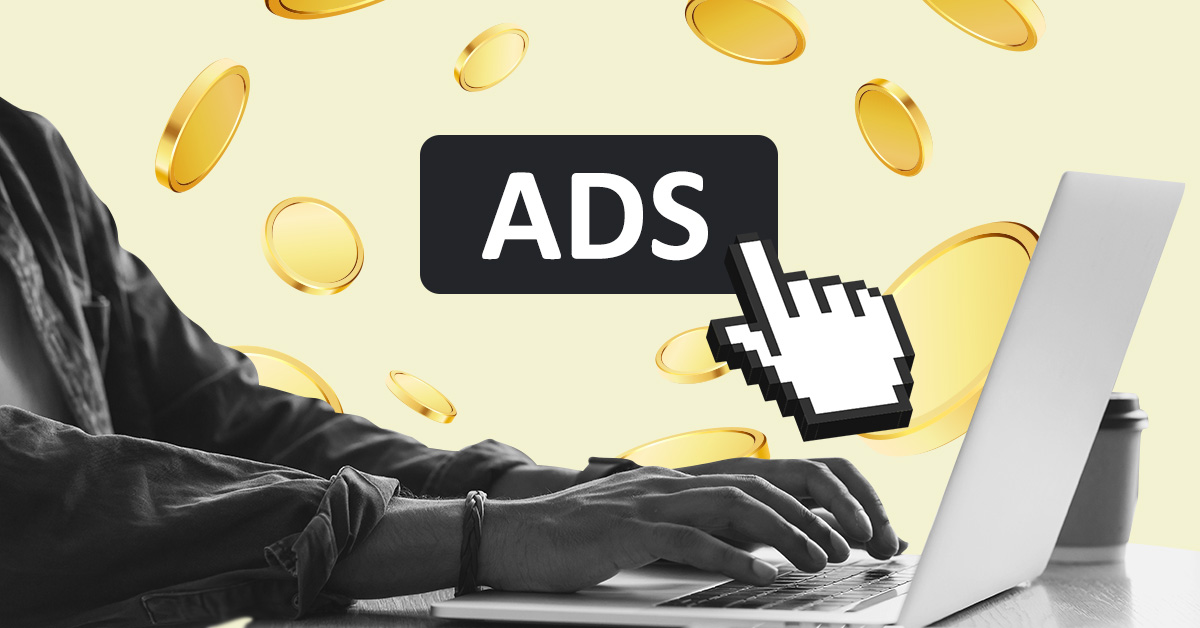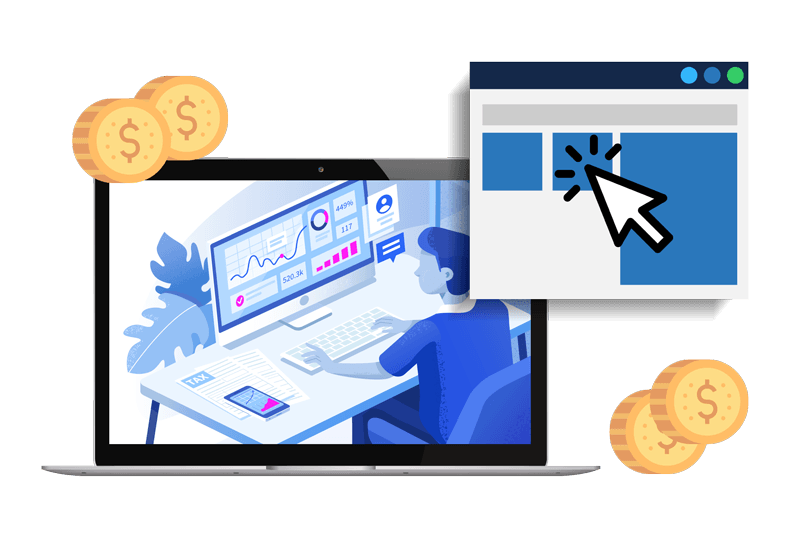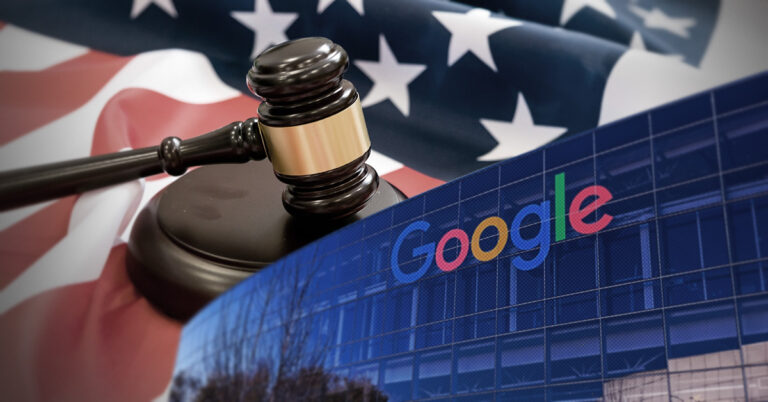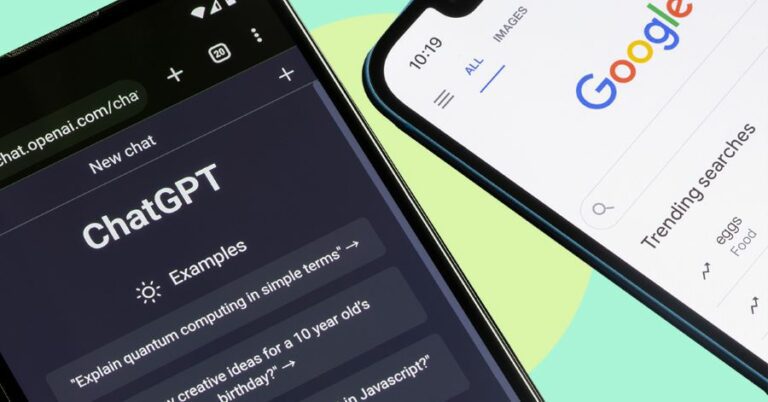Truelogic Episode 67 Recap: Fundamentals of Pay-Per-Click Marketing

Podcast Transcription
Berns San Juan: For marketers and business owners out there, I’ve got a question for you. On a scale of one to ten, can you gauge your level of understanding when it comes to paid advertising? More than that, the ability to manage your paid ads provider, your digital media buy provider, how well versed is your team, is your internal team in terms of understanding whether they do a good job or not?
A lot of businesses engage in some form of online advertising, but only about 45% really roughly know what they’re doing when it comes to paid visitors. As a digital marketer, I think it’s essential to understand AdWords. You don’t need to know how to do it yourself, but you do need to understand if is it headed in the right direction. And know whether or not your campaigns are headed in the direction that meets your business requirements or not.
So in today’s podcast, let’s talk about some of the fundamentals of AdWords and how it integrates into your marketing.
Pay-Per-Click Marketing Adoption in the Philippines
So, PPC adoption in the Philippines digital ad spend or Google Ads adoption in the Philippines. How are we going? I remember a lecture, way back in, when I started lecturing. As early back as 2016, I was telling people, we’re probably looking at about three, or four years before digital media buys, before Google Ad spend, before pay-per-click becomes super expensive. Because when mainstream brands start adopting digital media spend, pay-per-click. These things are on an ad-bidding model. That means the more people bid for a keyword, the more people bid for an audience, the more expensive that traffic becomes, and the more expensive it becomes for every player.
So Google Ads and other digital media networks are not as cost-effective today as they were five years ago. Fast forward, we all got locked down for three years. Everybody got forced to talk to their customers online, and the media buy in the country just went crazy.
The Philippines currently spends roughly a billion dollars annually on digital media, which is a huge jump. So that means the Philippine businesses are roughly spending around 15 billion pesos, give or take a couple of billion every quarter on digital media spend. What that’s done is it’s made the price of a visitor inaccessible to your average small business player. In my opinion, that’s tragic because I used to like to say digital is an equalizer. Digital is a great equalizer because it doesn’t matter what size your business is.
If you’re great at optimizing, if you’re great at strategy, if you’re great at execution, you should be able to beat the performance of enterprise-level businesses. I will say today, that it’s probably an enterprise game because the large companies have started to play in the paid media space. So why did it take a pandemic for people to discover the benefits of Pay-per-Click?
Benefits of Pay-Per-Click Marketing

Why should a business consider pay-per-click as a viable channel for acquiring clients and customers?
- Quick results
It’s fast, right? The results of AdWords are quick. You set up a Google ad today, it’s live in a couple of hours. You publish your, I would say YouTube ads, and it’s live tomorrow. You set up a campaign on Facebook, and it lives in a couple of hours or the next day, or whenever you schedule it. It’s not like a website that has like 6-8 week turnaround time. It’s not like SEO, which requires six to twelve months to mature. So the results are fast. So if you need something that’s effective and relatively low EQ, it’s a great go-to strategy.
- Increased visibility
Next, it increases the real estate you occupy on search. If you’re doing search ads, it increases the amount of real estate you’ll occupy on search, whereas if somebody puts in a savings account, you might appear as position three, organic, but you might appear as position one, paid, right? You might appear as position one, sponsored. So now you’re not just taking up a snap pack and an organic position, you’re taking up a snack pack, an organic position, and an ad on the top. So that increases visibility.
- The reach of a digital network is just much wider than organic search
Organic search gives you the best audience because nobody goes to Google unless they’re motivated. But the moment they’re not searching, your brand becomes invisible. You’re not top of mind.
Ads allow you to chase the relevant customers with your relevant product, relevant message. Oh, I remember there’s a great example. There’s a gaming website that I go to, and so I recently went to IKEA. I’m looking at this gaming chair, right, to give myself some remorse for not getting the gaming chair outright. I decided to look at it online.
I go to a gaming website, and the next day, I am chased by IKEA ads for the very chair that I did not make a purchase for. In short, IKEA is staying top of mind. Without them running that ad, I wouldn’t even remember talking about this white IKEA gaming chair that I did not buy. So it allows you to stay top of mind.
It allows you to continue to build desire. By the way, I see those ads maybe 30 more times, and I’ll probably order it and get it delivered to the house, right? So it works. It’s increased visibility because you’re not just present when people are on Google Search, you’re just present, period. So it’s a big deal.
- Precise targeting
Let’s use this same example, the IKEA gaming chair. How did IKEA know that? How am I getting chased by the product that I looked at? What IKEA did is they threw a cookie in my browser that allows any website that I go to within the Google Display ad network to know that that was a product that I looked at.
And so it serves me the ad that’s relevant to me. By the way, note that I’m not complaining about seeing the ad. By the way, in fact, I love it. I love being reminded that, “Hey, remorse, remorse. Like, you didn’t get this chair. You could be sitting much more comfortably. You could be much happier. Your chair could be the same color as your PC by now.”
So all of this creates a good experience for me as a potential customer, or actually as a customer for IKEA. But this is precision that you’re not able to do on organic. Like, the moment they leave Google Search, they’re gone. You’re not top of mind. This kind of precision, the ability to chase me with the specific product I looked at, is excellent precision targeting. This is only done through paid ads and through PPC.
- Reach local customers
When you’re relevant organically, I think creating a keyhole or a relevant area for organic is more difficult, especially without you having to spam the geolocation of an area. But with AdWords, it’s so easy because when you set up an AdWords account, it’s asking you, okay, who do you want me to talk to? And you can literally set ‘here’s where I’m located, and I want everybody 5 km around me, 10 km around me’, and so on and so forth. So the targeting is significantly more precise.
In fact, for some of the brands that I help, and let’s say their budget is a bit limited, I ask them, “Where are your most viable customers located? Give me the top seven cities. Right? So I don’t want to target all of NCR for you. I don’t want to target all of the Philippines for you because you’ve got a limited budget. Let’s limit the targeting of your ads. Where are your most viable customers? And then we just target those dense metropolitan areas. So locality is a great feature of PPC.
- Pay-for-performance
Not really, right? Not only do you pay for every click, but you also pay for every thousand impressions. Like, meaning the number of eyeballs that get to see your brand, that gets to see your product, that gets to see your marketing material, right? Like anybody who sees your content, you have to pay per thousand people who see it. But impressions are super cheap.
If you’re paying $3 per thousand impressions, $5 per thousand impressions, you paid like half a cent per eyeball that saw your brand logo, right? So, yes, only pay when it’s a bit of pay for performance.
- Flexibility and agility
Because you are able to spend as much or as little as you want, spend as much or as little as you want on your campaign. And this can be, by the way, on a daily and weekly basis.
If you’re a type of business where you peak on a Friday to a Monday, then start your ads on Thursday and kill them on Sunday, because anybody that it wants to talk to, will have already talked to. So that kind of flexibility is only like, let’s say it’s Christmas and you’re going to do a post-Christmas sale. If you didn’t do that with your SEO as early as October, it’s too late. But with AdWords, it’s not too late. It’s quick, right?
And so you are able to be more agile on PPC than you are on organic.
- A second chance with missed connections
And then the other thing is, it creates a second chance. It makes you sticky, it makes you top of mind, so it gives you a second chance to reconnect with your audience, with your potential customer.
Setting Up Your PPC Campaign
- Understand your campaign objectives and goals
So first off, set up your PPC campaign by knowing what the goal of the campaign is like, What’s the objective? Is it to get visitors and drive brand awareness? Is it to acquire leads by getting their email addresses? Is it to generate a sale by bringing them to your product pages?
But be very clear about what you want to do. Now, let’s say I wanted to do all of those three things, can I run one campaign? The answer is, that you can run it on one ad account. But I would recommend you run three different campaigns because when you set up a campaign on Google Ads, for example, you specify the goal for that campaign. The same is true, by the way, on Facebook, where when you set up a campaign, it asks you what the goal of the campaign is.
So have a clear objective, and let’s say your objective is traffic and sales. Have one campaign that runs for traffic, and one campaign that runs for sales. Don’t mix them in the same campaign. Set up two different campaigns on that one account for your brand.
- Choose the right PPC platform
Next, pick the right platform. Are your customers on Instagram? Is that where you’re going to pay for clicks? Are your customers on Facebook? Is that where you’re going to pay for clicks? Are your customers on YouTube? Is that where you pay for clicks? Are your customers going to be on Google? Is that where you pay for clicks?
This is why it’s so important to develop your customer avatars, because you want to know what channels they’re going to be in. And I’ll give you guys an example. If you guys are talking to a Gen X-er that probably falls within market B, then your target channels will probably be Google and YouTube, right? And email. But probably Google, YouTube, and email.
If you’re targeting a Gen Z person, you probably want to throw TikTok in the mix, you probably want to throw Instagram in the mix, because they’re probably there on those platforms. So choose the right platform. Choose the right channel to be present in.
- Define targeting parameters
Are you only talking to people who have already visited your website? Are you marketing to people who have already visited your website? Are you marketing to people who have never heard about you before? Are you marketing only to people who have bought something from you before? But these are examples of targeting parameters, right? Are you only talking to people in Alabang? Are you only talking to people in Makati and BGC? What are your targeting parameters? Who are you talking to? But more important than that, who are you not talking to? Who are you not spending on?
- Keyword research and selection

Now, if you’re running a search ad, then, of course, keyword research. Now, don’t just go, For those of you that don’t know, I teach at the Digital Marketing Institute for topics for AdWords, web development, and SEO. One of the things that I see when people are beginning in digital is if they want to sell, if the product is a television, then the keyword research says TV.
Why? Like, you don’t know if that’s a high school person with a wish list. You don’t know if that’s a high school person doing a term paper on TV. You don’t know if that’s a person with enough cash flow who can pay for that TV.
There is more value to the customer who types in a ‘40-inch smart TV’ than the person who just puts in the TV, right? Because you don’t know anything about the person that types in TV other than they can find the T letter and the V letter on a keyboard. That’s all you know about them. You don’t know anything else but a person that puts in a ‘40-inch smart TV’, you probably know a little bit about them. Like A. they probably have the budget for that, B. they probably have an internet connection at home, C. they probably want to subscribe to Netflix.
Which is why they want a smart TV and so on and so forth. So the longer the keyword, the more information you can derive about the customer. But don’t do your keyword research. Don’t be lazy about your keyword research. Your SEO and your Google ad search network rise and fall with your keyword selection. So that is super important.
- Ad copywriting
So here I’ll give you a hack. Please use ChatGPT. If you’re doing it yourself, please use ChatGPT to polish your writing. Otherwise, leave it to a pro, right? There is nothing worse than putting a budget on a poorly written ad, on a poorly designed banner, or on a poorly designed single-image post. So do your practice, your copywriting, and if you’re not a pro, leave it to the pros, because you’re literally flushing money down the drain when you do it poorly.
- Craft compelling landing pages for higher conversions
Okay, next, ‘to a landing page or not to a landing page?’ That is the question. And what the advice I usually give people is when your goal is top funnel brand awareness traffic, no need for a landing page. But if any of your goals are conversion-based, meaning you’re trying to gain a client, you’re trying to gain a sale, have a dedicated landing page because remember, you paid for that client. So the default conversion rate of that page cannot be good enough. You have to have a page that is super optimized for being able to acquire the sale or acquire the lead.
What’s a compelling landing page? A compelling landing page is one where A. the problem to be solved or the virtue of the product is front and center. Two, there are only two to three buttons that the user can click and two of them are conversion buttons. Three, there are not multiple exits to that page. And four, there is social proof and a functioning form, right? These are compelling landing pages.
- Don’t be afraid to A/B test.
If your landing page doesn’t work for like three, four, or five days, change it up, try the next one, and change it up and try the next one. And if you get one that converts really well, stick with it, right? If it begins to trend down, that means people are fatiguing. Time to change it up.
- Budget and bidding strategies
The practice that we tend to do is to test four pieces of collateral simultaneously. We then eliminate the two weakest and allocate the remaining budget to the remaining two strong ones. The following month, we supplement the two missing ones with two new ads that will compete with the two that are already performing. Then rinse and repeat allocate all of the budget to the two strongest performers. Eliminate the two weakest the following month. Rinse and repeat.
Until you get a set of four ads that perform. And then when any of those ads begin to decline, then start trimming them down and start creating new collateral, right? In terms of budget management, know whether you have peak seasons or not.
Advanced PPC Strategies and Techniques
- Remarketing and retargeting campaigns
Now, what are some of the other things that you can do? I see a lot of brands talking about how they’ve got an always-on campaign, and most of the time, the always-on campaign is a brand keyword-related campaign. Like, This means they’re constantly bidding for their own brand name and then most of the time, always only on search.
Why not remarket? Why not remarket to people who have already visited a specific product, a specific category, or a specific page on your website, right? Why not remarket? Why not talk to people who have already implied they want to talk to you?
- Ad remarketing lists and segmentation
I’ve talked to a lot of brands and sometimes I ask them, “Do you guys have a mailing list? Do you guys have a customer list?” And yes, they’ll tell me “It’s 12,000, it’s 20,000, it’s 40,000.” And then I go, Aside from emailing that list, what else do you do? And they’ll go, nothing, right? Like, why? That’s a gold mine. If you have their email addresses, upload them to Google as a remarketing list and instruct Google, I want these specific people to see my ads and to remember me so that I can be top of mind for them. That’s a remarketing list.
- Google Performance Max
The next one is knowing when to use Performance Max and smart ads. Like, this means Google is generating your ads for you. Like, This is another feature that Google has. Performance Max is great. I think if you are trying to drive traffic to a brand, you’ll get cheaper bid rates. It’ll optimize your ad performance, which is terrific if your goal is the top funnel, but if your goal is conversion, Performance Max will not do it for you.
But learn to utilize all of the features Google Ads has to offer, Facebook has to offer, and so on and so forth.
- Display advertising and banner ad
Next, display ads. They’re super cheap, right? Like, It’s the difference between paying for a customer for 0.24 cents for a visitor and four pesos for a visitor. It’s a super cheap way for advertising, to get your messaging, branding, and content in front of a user.
- Explore which channels work for you
Again, based on the audience you’re talking to, they might be on Google and on YouTube, or they might be on Instagram, Facebook, and TikTok. But explore the other channels with other types of content that is available. Don’t just get stuck to, “Oh, yes, I’m advertising on Search. Oh, yes, I’m advertising on banners. Yes, all of my ads are single-image posts. Should I do video ads on Facebook or on YouTube?”
The answer is both. Right? Don’t limit yourself to one medium of content, because you easily have three types of media that are available to you to continue to talk to your customers.
Common PPC Mistakes and How to Avoid Them
- Poor keyword selection
If you are deciding to do PPC, A. lazy or poor keyword selection, that’s a still-born campaign. There will be no heartbeat. This is like your campaigns, your PPC campaigns will rise and fall with your keyword selection.
- Audience selection
If you’re doing any form of display advertising, most of the time I ask people, “Are you doing anything on digital?” “Yes.” “What are you doing?” “Facebook.” “Okay, great. What are you doing on Facebook?” “I’m boosting, nothing.” So you’re not audience optimizing, you’re not audience targeting. You’re just casting a wide net. You’re just throwing stuff at the wall and seeing what will stick. You’re going to spend real money. You better come at it with a real strategy.
- Ineffective ad copy
Again, you’re spending real money. If you have not polished your wordsmithing, hire a wordsmith to do it for you. Like, the money you’ll spend on a pro will be well worth it because they will make your ad spend worth it. If you try to amateur this, you might as well donate your ad spend to charity.
- Wasting budget on irrelevant clicks
You might run a campaign and then realize you’re targeting bad audiences. I’ll give you guys an example. Like, Take, for example, Truelogic. Sure, we’re hybrid. Sure, we’re online, but we visit our customers, right? And the customers that want to work with us are people that we can drive to. If I realize 50% of our advertising was spent in Palawan, in Iloilo, in Bacolod, I cannot visit those guys. And if there was a digital marketing company in those areas, they could steal my clients from me because they’re there. They can wine and dine them, they can take them to coffee, they can charm them, and I cannot. So my best target market is the people that I can drive to, and there is an office that people can drop by and visit and whatnot.
So make sure that you’re spending your money on the audiences that you actually want, on the people you can actually convert.
- Poorly optimized landing pages and user experience
Yes, there’s a landing page, but the landing page looks exactly like the organic page. That’s such a big no-no. Why did you spend to rebuild a landing page if it looked like your organic page? So absolutely not. What optimizes for organic does not necessarily optimize for conversion.
- Neglecting ad testing and experimentation
Your ad’s not working, but you’re not optimizing anything. You’re not A/B testing, right? And I’m not sure, I don’t believe Einstein said this, but he’s usually quoted for it. “The definition of insanity is trying the same thing over and over again and hoping for a different result”. So don’t forget A/B testing and ad testing. Find out what works. Double down on what works.
- Overlooking campaign tracking and analytics
This is proof that your money was well spent.
- No competitive analysis
And then the last one is, don’t ignore the competition, right? Because this is a market, there’s always competition. And if you’re ignoring your competition, they’re not ignoring you.
So, with that being said, thank you very much for joining me on another episode of the Truelogic DX podcast. If you have any comments, questions, or suggestions, please feel free to reach out to us, we are on social media channels. Please check out www.truelogic.com.ph and subscribe to our Spotify, Google, and Apple accounts. We’re on Facebook, LinkedIn, and YouTube.
I do want to thank the team for creating the content for the Truelogic DX podcast and for powering it, I also want to thank our friends at PodMachine. So cheers and see you on the next episode. Thank you, guys.










